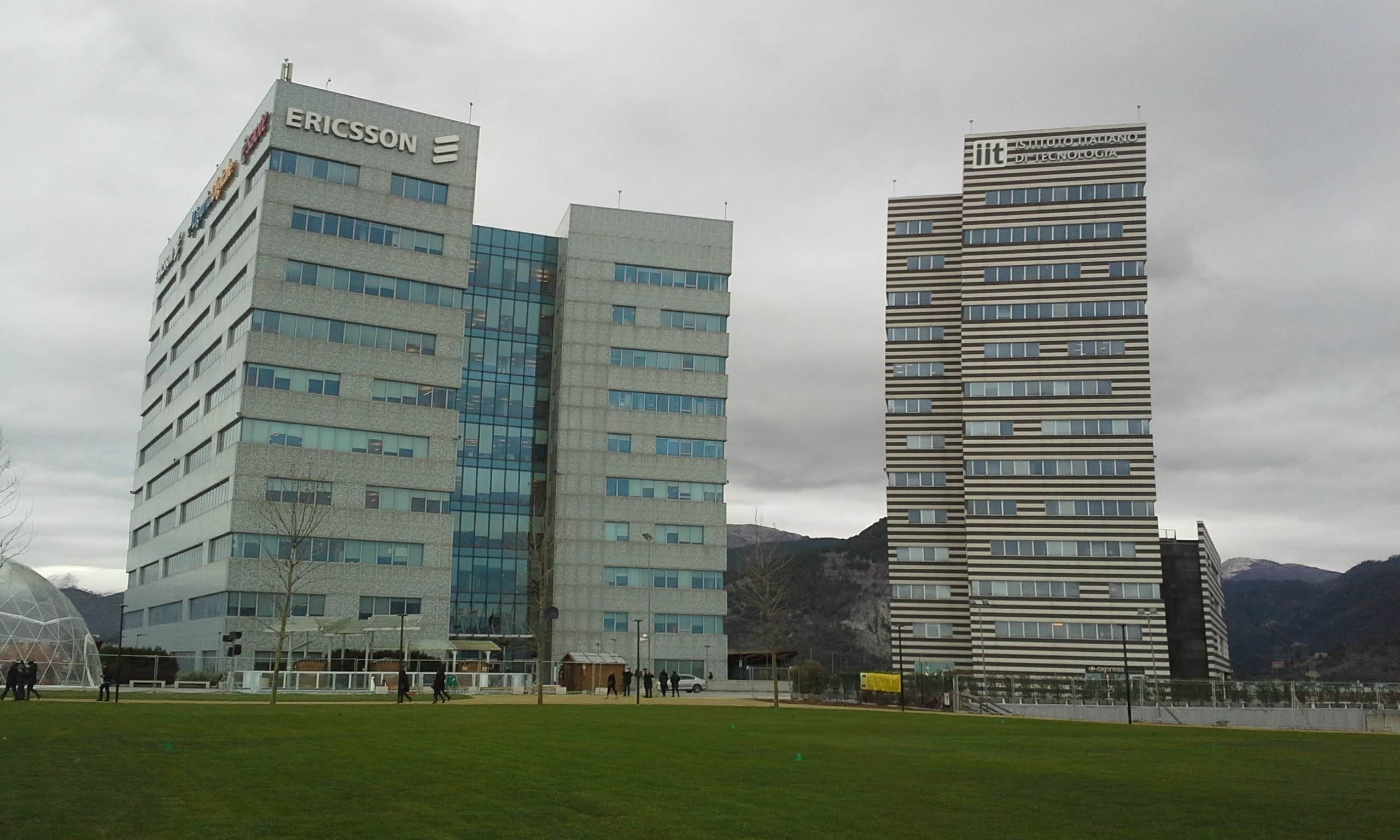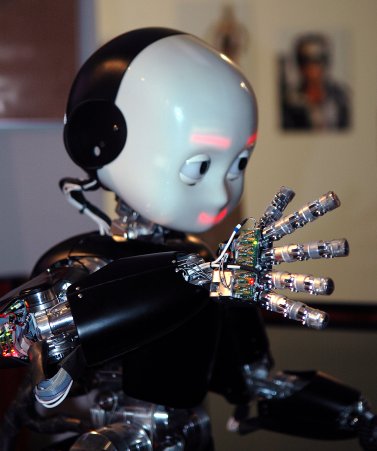|
Alberto Diaspro
Alberto Diaspro (born April 7, 1959, in Genoa, Italy) is an Italian scientist. He received his doctoral degree in electronic engineering from the university of Genoa, Italy, in 1983. He is full professor in applied physics at university of Genoa. He is research director of Nanoscopy Italian Institute of Technology. Alberto Diaspro is President of the Italian biophysical society SIBPA. In 2022 he got the Gregorio Weber Award for excellence in fluorescence Fluorescence is the emission of light by a substance that has absorbed light or other electromagnetic radiation. It is a form of luminescence. In most cases, the emitted light has a longer wavelength, and therefore a lower photon energy, .... References External links People* https://www.iit.it/people/alberto-diaspro Alberto Diaspro - Top Italian Scientist in PhysicsAlberto Diaspro è stato eletto Presidente della Società Italiana di Biofisica Pura e Applicata {{DEFAULTSORT:Diaspro, Alberto 1959 births Living pe ... [...More Info...] [...Related Items...] OR: [Wikipedia] [Google] [Baidu] |
Istituto Italiano Di Tecnologia
The Istituto Italiano di Tecnologia (IIT) (in English: Italian Institute of Technology) is a scientific research centre based in Genoa (Italy, EU). Its main goal is the advancement of science, in Italy and worldwide, through projects and discoveries oriented to applications and technology. Some account IIT as the best Italian scientific research centre. In June 2016, the science journal Nature named Italian Institute of Technology among the list of the top 100 ''rising stars'' scientific institutes in the world, that is the ranking of the top 100 institutions which most improved their publication quality scores in the Nature index between 2012 and 2015, on world basis. In November 2016, the Nature Index database named IIT among the list of the top 100 scientific centres running successful international collaborations, on world basis. In February 2017, the scientific evaluation agency Anvur of Italy's Ministry of Education evaluated and ranked the Italian Institute of ... [...More Info...] [...Related Items...] OR: [Wikipedia] [Google] [Baidu] |
Engineers From Genoa
Engineers, as practitioners of engineering, are professionals who invent, design, analyze, build and test machines, complex systems, structures, gadgets and materials to fulfill functional objectives and requirements while considering the limitations imposed by practicality, regulation, safety and cost. "Science is knowledge based on our observed facts and tested truths arranged in an orderly system that can be validated and communicated to other people. Engineering is the creative application of scientific principles used to plan, build, direct, guide, manage, or work on systems to maintain and improve our daily lives." The word ''engineer'' (Latin ) is derived from the Latin words ("to contrive, devise") and ("cleverness"). The foundational qualifications of an engineer typically include a four-year bachelor's degree in an engineering discipline, or in some jurisdictions, a master's degree in an engineering discipline plus four to six years of peer-reviewed professional ... [...More Info...] [...Related Items...] OR: [Wikipedia] [Google] [Baidu] |
Electronic Engineering
Electronics engineering is a sub-discipline of electrical engineering which emerged in the early 20th century and is distinguished by the additional use of active components such as semiconductor devices to amplify and control electric current flow. Previously electrical engineering only used passive devices such as mechanical switches, resistors, inductors and capacitors. It covers fields such as: analog electronics, digital electronics, consumer electronics, embedded systems and power electronics. It is also involved in many related fields, for example solid-state physics, radio engineering, telecommunications, control systems, signal processing, systems engineering, computer engineering, instrumentation engineering, electric power control, robotics. The Institute of Electrical and Electronics Engineers (IEEE) is one of the most important professional bodies for electronics engineers in the US; the equivalent body in the UK is the Institution of Engineering and Te ... [...More Info...] [...Related Items...] OR: [Wikipedia] [Google] [Baidu] |
Living People
Related categories * :Year of birth missing (living people) / :Year of birth unknown * :Date of birth missing (living people) / :Date of birth unknown * :Place of birth missing (living people) / :Place of birth unknown * :Year of death missing / :Year of death unknown * :Date of death missing / :Date of death unknown * :Place of death missing / :Place of death unknown * :Missing middle or first names See also * :Dead people * :Template:L, which generates this category or death years, and birth year and sort keys. : {{DEFAULTSORT:Living people 21st-century people People by status ... [...More Info...] [...Related Items...] OR: [Wikipedia] [Google] [Baidu] |
1959 Births
Events January * January 1 - Cuba: Fulgencio Batista flees Havana when the forces of Fidel Castro advance. * January 2 - Lunar probe Luna 1 was the first man-made object to attain escape velocity from Earth. It reached the vicinity of Earth's Moon, and was also the first spacecraft to be placed in heliocentric orbit. * January 3 ** The three southernmost atolls of the Maldive Islands, Maldive archipelago (Addu Atoll, Huvadhu Atoll and Fuvahmulah island) United Suvadive Republic, declare independence. ** Alaska is admitted as the 49th U.S. state. * January 4 ** In Cuba, rebel troops led by Che Guevara and Camilo Cienfuegos enter the city of Havana. ** Léopoldville riots: At least 49 people are killed during clashes between the police and participants of a meeting of the ABAKO Party in Kinshasa, Léopoldville in the Belgian Congo. * January 6 ** Fidel Castro arrives in Havana. ** The International Maritime Organization is inaugurated. * January 7 – The United States reco ... [...More Info...] [...Related Items...] OR: [Wikipedia] [Google] [Baidu] |
Fluorescence
Fluorescence is the emission of light by a substance that has absorbed light or other electromagnetic radiation. It is a form of luminescence. In most cases, the emitted light has a longer wavelength, and therefore a lower photon energy, than the absorbed radiation. A perceptible example of fluorescence occurs when the absorbed radiation is in the ultraviolet region of the electromagnetic spectrum (invisible to the human eye), while the emitted light is in the visible region; this gives the fluorescent substance a distinct color that can only be seen when the substance has been exposed to UV light. Fluorescent materials cease to glow nearly immediately when the radiation source stops, unlike phosphorescent materials, which continue to emit light for some time after. Fluorescence has many practical applications, including mineralogy, gemology, medicine, chemical sensors ( fluorescence spectroscopy), fluorescent labelling, dyes, biological detectors, cosmic-ray detec ... [...More Info...] [...Related Items...] OR: [Wikipedia] [Google] [Baidu] |
Gregorio Weber
Gregorio Weber (4 July 1916 – 18 July 1997) was an Argentinian scientist who made significant contributions to the fields of fluorescence spectroscopy and protein chemistry."Biophysical Journal, Volume 75, July 1998, pages 419-421" Weber was elected to the National Academy of Sciences in 1975. Early life and education Gregorio Weber was born in Buenos Aires, Argentina in 1916. He attended the University of Buenos Aires where he received his Doctor of Medicine degree in 1942. He worked as a medical student from 1939 to 1943 in the Department of Physiology and Biochemistry as a teaching assistant for Bernardo Alberto Houssay. Houssay was renowned as a physiologist for his work on the endocrine system and in particular the pituitary gland. Weber continued his studies at the University of Cambridge under the guidance of Malcolm Dixon, well-known enzymologist, and, in 1947, earned a Ph.D. in biochemistry. His thesis, titled "Fluorescence of Riboflavin, Diaphorase and Related Substanc ... [...More Info...] [...Related Items...] OR: [Wikipedia] [Google] [Baidu] |
Biophysical
Biophysics is an interdisciplinary science that applies approaches and methods traditionally used in physics to study biological phenomena. Biophysics covers all scales of biological organization, from molecular to organismic and populations. Biophysical research shares significant overlap with biochemistry, molecular biology, physical chemistry, physiology, nanotechnology, bioengineering, computational biology, biomechanics, developmental biology and systems biology. The term ''biophysics'' was originally introduced by Karl Pearson in 1892. Roland Glaser. Biophysics: An Introduction'. Springer; 23 April 2012. . The term ''biophysics'' is also regularly used in academia to indicate the study of the physical quantities (e.g. electric current, temperature, stress, entropy) in biological systems. Other biological sciences also perform research on the biophysical properties of living organisms including molecular biology, cell biology, chemical biology, and biochemistry. Overview ... [...More Info...] [...Related Items...] OR: [Wikipedia] [Google] [Baidu] |
University Of Genoa
The University of Genoa, known also with the acronym UniGe ( it, Università di Genova), is one of the largest universities in Italy. It is located in the city of Genoa and regional Metropolitan City of Genoa, on the Italian Riviera in the Liguria region of northwestern Italy. The original university was founded in 1481. According to Microsoft Academic Search 2016 rankings, the University of Genoa has high-ranking positions among the European universities in multiple computer science fields: * in machine learning and pattern recognition the University of Genoa is the best scientific institution in Italy and is ranked 36th in Europe; * in computer vision the University of Genoa is the best scientific institution in Italy and is ranked 34th in Europe; * in computer graphics the University of Genoa is ranked 2nd institution in Italy and 35th in Europe. The University of Genoa has a strong collaboration with the Italian Institute of Technology (IIT), since its foundation in 2005 ... [...More Info...] [...Related Items...] OR: [Wikipedia] [Google] [Baidu] |
Italian Institute Of Technology
The Istituto Italiano di Tecnologia (IIT) (in English: Italian Institute of Technology) is a scientific research centre based in Genoa (Italy, EU). Its main goal is the advancement of science, in Italy and worldwide, through projects and discoveries oriented to applications and technology. Some account IIT as the best Italian scientific research centre. In June 2016, the science journal Nature named Italian Institute of Technology among the list of the top 100 ''rising stars'' scientific institutes in the world, that is the ranking of the top 100 institutions which most improved their publication quality scores in the Nature index between 2012 and 2015, on world basis. In November 2016, the Nature Index database named IIT among the list of the top 100 scientific centres running successful international collaborations, on world basis. In February 2017, the scientific evaluation agency Anvur of Italy's Ministry of Education evaluated and ranked the Italian Institute of Technology ... [...More Info...] [...Related Items...] OR: [Wikipedia] [Google] [Baidu] |
University Of Genoa
The University of Genoa, known also with the acronym UniGe ( it, Università di Genova), is one of the largest universities in Italy. It is located in the city of Genoa and regional Metropolitan City of Genoa, on the Italian Riviera in the Liguria region of northwestern Italy. The original university was founded in 1481. According to Microsoft Academic Search 2016 rankings, the University of Genoa has high-ranking positions among the European universities in multiple computer science fields: * in machine learning and pattern recognition the University of Genoa is the best scientific institution in Italy and is ranked 36th in Europe; * in computer vision the University of Genoa is the best scientific institution in Italy and is ranked 34th in Europe; * in computer graphics the University of Genoa is ranked 2nd institution in Italy and 35th in Europe. The University of Genoa has a strong collaboration with the Italian Institute of Technology (IIT), since its foundation in 2005 ... [...More Info...] [...Related Items...] OR: [Wikipedia] [Google] [Baidu] |



